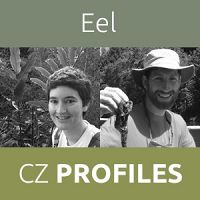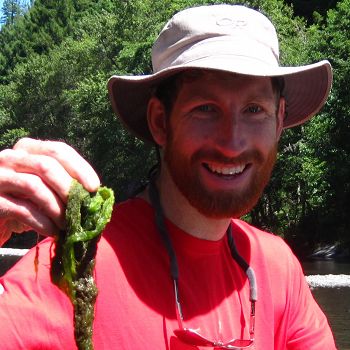Critical Zone Profiles - Meet the people doing CZO science (Eel River CZO)
What kind of work do critical zone scientists do? Who are some of the scientists working at Critical Zone Observatories across the country? How does their work inform our understanding and management of critical zone resources, such as water, soil, and food?
These brief profiles feature just a few of the 250+ senior scientists, university faculty, postdoctoral researchers, and graduate students who work at the nine CZO sites currently funded by the National Science Foundation. CZO people are cross-disciplinary scientists who have expertise in fields including hydrology, geochemistry, geomorphology, ecology, biology, and climatology. More profiles will be added over time, as new scientists join the CZO teams.
The profiles provide a non-technical introduction to the work CZO people do. Each scientist was asked to respond to the following questions:
1. What is the goal of your work?
2. How is your work relevant to the science community and to the larger human communities in which we live?
3. Why is studying the critical zone important?
4. How has the CZO network been valuable to you in your work?
5. How can the CZOs help improve our understanding and management of natural resources?
Profiles: Grad Students | Early Career | Boulder | Calhoun | Catalina-Jemez | Eel | IML | Luquillo | Reynolds | Shale Hills | Southern Sierra | and more profiles coming
EEL RIVER CZO
KEITH BOUMA-GREGSON (freshwater ecologist, PhD student)
Keith Bouma-Gregson is a river ecologist studying algae in the Eel River, located in the Coast Range Mountains of Northern California. Algae are foundational to the summertime food web. Insects and fish feed on the high algal productivity that the river supports. However, some algae negatively affect the river ecosystem. Cyanobacteria, or blue-green algae, can produce toxins which are harmful to humans, pets, and livestock. Bouma-Gregson is researching the ecology of cyanobacterial mats. He and his colleagues are studying whether drought and low-flow conditions promote the growth of cyanobacteria over other non-toxic algae. The goal of this research is to better predict when and where cyanobacterial mats will occur and then inform river management to reduce the frequency of these mats. Visit Keith's profile >
STEPHANIE CARLSON (fish biologist, associate professor)
Stephanie Carlson studies the ecology of stream fishes, with a focus on Pacific salmon and trout at the southern end of their range in California. These populations experience vastly different conditions than northern populations. Populations of Chinook salmon, endangered Coho salmon, and threatened steelhead trout once returned in great numbers to the Eel River but, today, their populations are in decline in the Eel and throughout California. Causes of their declines are many but include reductions in summer base flow and elevated temperatures... Visit Stephanie's profile >
DANIELLA REMPE (hydrologist, geomorphologist, PhD student)
Scientists don’t yet fully understand how the critical zone is structured and what controls the movement of water and nutrients through the subsurface system that supports life. Studying the critical zone directly helps us understand how this zone evolves and how it affects hydrologic and ecologic processes. Daniella Rempe seeks to understand... Visit Daniella's profile >
TODD DAWSON (environmental scientist, professor)
Professor Todd Dawson has a long-term interest in and has done a considerable amount of research on the interactions of water, vegetation, and climate. A central goal of Dawson’s work is understanding the various roles trees play in hydrological processes in the broadest sense. More specifically, Dawson studies how trees use and move water in and from the subsurface into the atmosphere in a diversity of landscape types and climatic regions. Dawson is a member of the Eel River Critical Zone Observatory (CZO). Visit Todd's profile >
JASPER OSHUN (environmental scientist, PhD student)
California and the Western United States are currently experiencing severe drought. I grew up in Sebastopol, California, in a water-conscious family. I went to school at Brown and returned to California in Fall 2006. In my lifetime I've seen widespread changes in land cover in Sonoma County – from apple orchards, savannah, and redwood forests to vineyards. Vineyards are thirsty, taking water from the Russian River. Runoff from vineyards also delivers large amounts of fine-grained sediment to the river, which warms the water temperature, making the river less hospitable for fish. Visit Jasper's profile >
Explore Further







